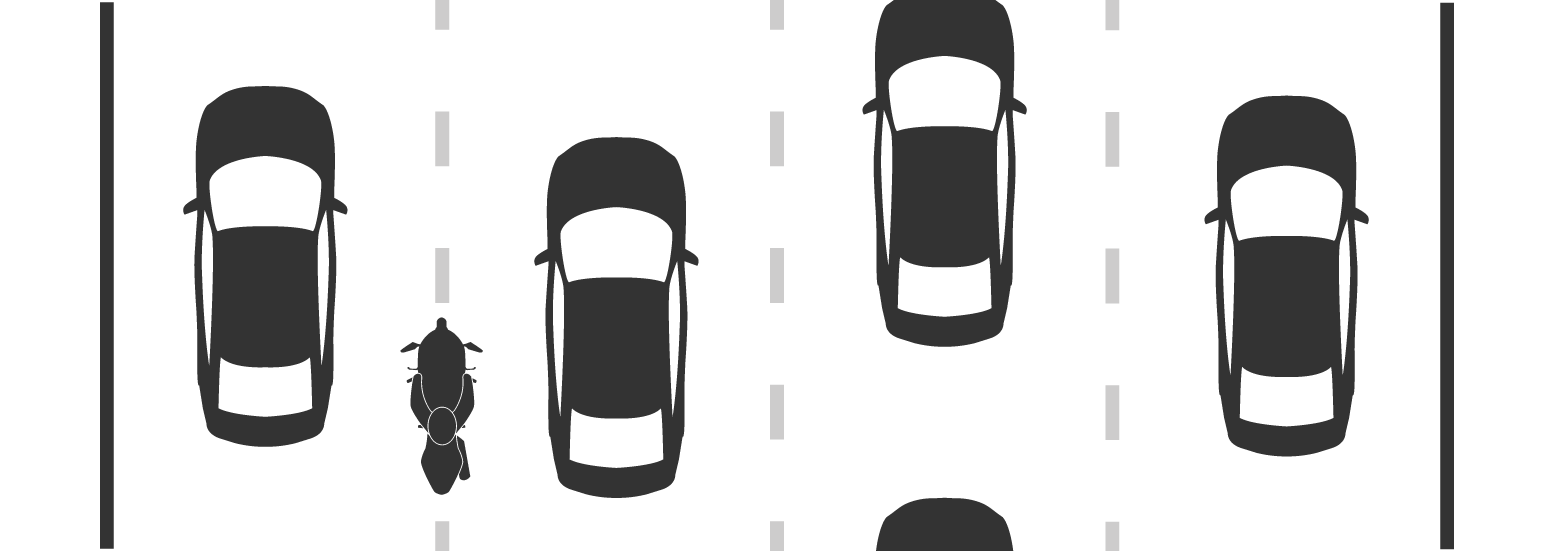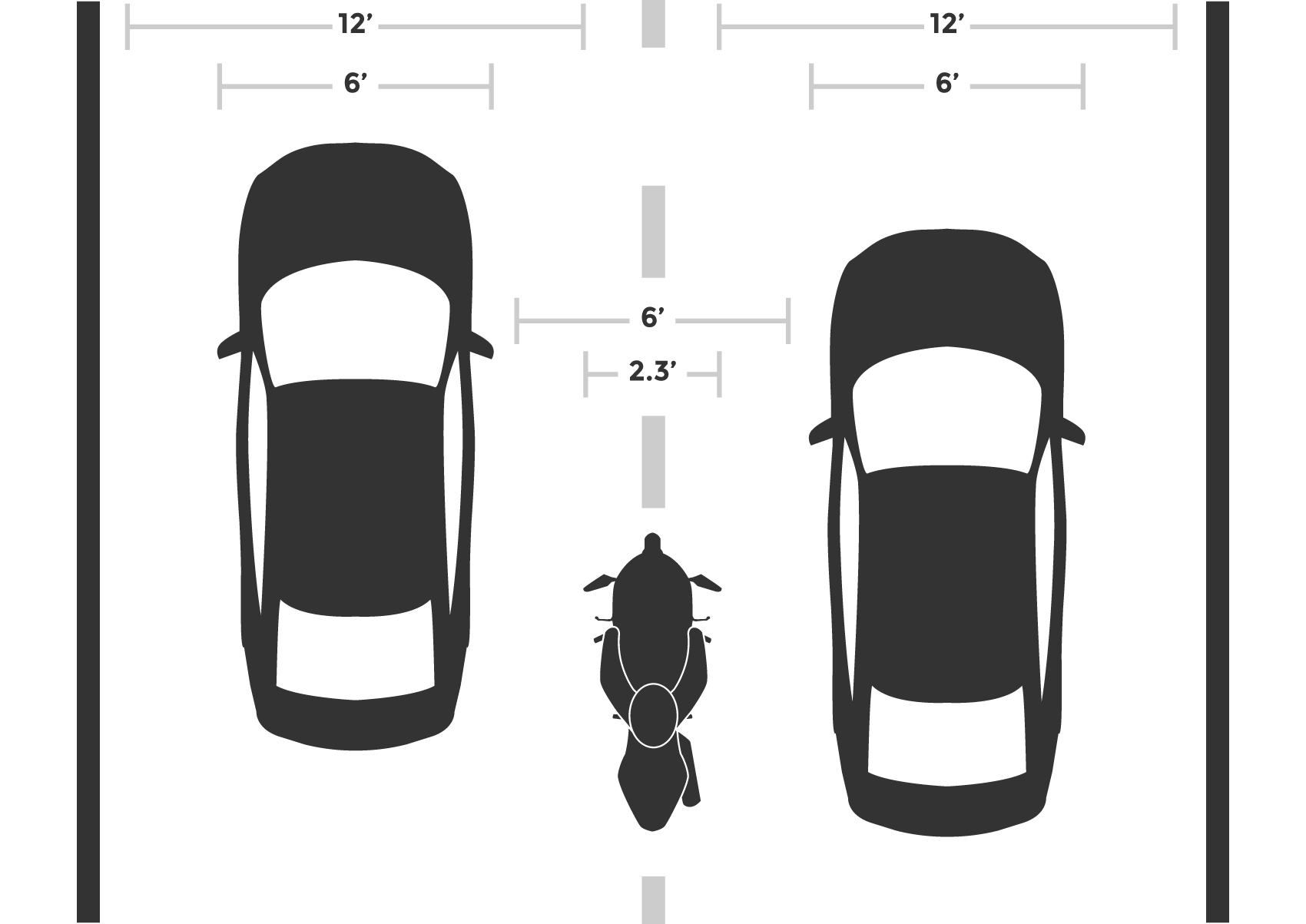In 2013, the California Highway Patrol published guidelines for splitting traffic lanes on a motorcycle. Just weeks ago, a civil complaint forced the CHP to retract it all — the guidelines are removed from the CHP website, and all printed materials with the text are trashed.
Some motorcycle groups are irate. I think they should chill out.
Lane-splitting motorcycles are common in many parts of the world, but in the United States only California permits the behavior. The other 49 states ban the practice. Some American motorcyclists fear we’ll lose the privilege entirely.
And some motorcyclists aren’t convinced we have the privilege in the first place. “Lane splitting isn’t legal, it’s just not illegal,” they’ll often parrot. The difference between California and other states isn’t that we have a law to permit lane splitting, but rather we don’t have laws that forbid it. “It’s a legal gray area,” like all of the other things in life that aren’t explicitly permitted by words written by the state congress.
The CHP guidelines for safe splitting were the closest thing to legal permission we motorcyclists had. Now they’re gone, let’s make a stink.
Except that’s not how law works.
First, the California Highway Patrol doesn’t write laws. But more importantly, there is nothing gray about the legality of things that are “not illegal.” We don’t need old guys in Sacramento to pass laws before we can do things unaccounted for by rules.
Retracted CHP guidelines
Lane splitting in a safe and prudent manner is not illegal in the state of California.Motorcyclists who are competent enough riders to lane split, should follow these general guidelines if choosing to lane split:
- Travel at a speed that is no more than 10 MPH faster than other traffic – danger increases at higher speed differentials.
- It is not advisable to lane split when traffic flow is at 30 mph or faster — danger increases as overall speed increases.
- Typically, it is safer to split between the #1 and #2 lanes than between other lanes.
- Consider the total environment in which you are splitting, including the width of the lanes, size of surrounding vehicles, as well as roadway, weather, and lighting conditions.
- Be alert and anticipate possible movements by other road users.
CHP messaging guidelines for lane splitting is like the Food and Drug Administration broadcasting, “Ham sandwiches on wheat bread with yellow mustard are permissible.” Great, now there’s no question whether ham sandwiches are legal.
But I prefer sourdough and Dijon with my ham. Is that sandwich permitted?
The CHP guidelines were ordered moot because the CHP has no authority to create rules. While some motorcyclists construed the guidelines as permission to split, we don’t need permission. Besides, the CHP outline wasn’t inclusive of much of the splitting we do daily.
The case for lane splitting
Some motorcycle groups view the takedown of the CHP guidelines as an attack on lane splitting, another nail in the coffin of freedom driven by safety nannies and car drivers scared by dare-devil motorcyclists. This paranoia may be valid.
So I’ll turn my voice to non-riders unsure if lane splitting should be permitted. As a rider who partakes in splitting daily, I am interested in protecting the option.
Practical defenses of the behavior often come in two varieties, which I will summarize but won’t otherwise belabor here. Some argue that many motorcycles are air-cooled and will overheat if stuck in stopped traffic. True, but not many bikes are air-cooled these days and I want to split in cold weather, too. Others suggest splitting is a safety maneuver intended to avoid rear-end collisions in stop-and-go traffic, and that’s also valid but not applicable to all scenarios where motorcycles split.
I don’t need to justify a lane split by one of these practicalities. There are better reasons.
We fit
Motorcyclists should be free to split lanes because we fit. As a matter of mathematics, we fit better between cars than those cars fit in highway lanes.
A typical US interstate lane spans 12 feet across, and the width of a Honda Accord — the top-selling car in America — measures six feet. By those numbers, a common automobile fills one half of an interstate lane.
This also means that, on average, there is a six-foot gap between two cars on the freeway. Any motorcycle with a width under three feet fills less of this gap, as a percentage of width, than a Honda Accord fills a full interstate lane. (My motorcycles each measure just 2.3 feet across.)
If a car fits in a freeway lane, then my motorcycle fits between cars.
We’re spatially unimpaired
Critical readers will have already calculated a number I left out of the previous equation. While a motorcycle uses a smaller percentage of available space, the leftover gaps — the distance between a lane-splitting motorcyclist and cars on either side — are much smaller than the normal gaps between cars. In normal conditions, the gap between cars is roughly equal to the width of one car. With a motorcycle between them, the gap shrinks to a fifth of a car, or roughly half the width of a motorcycle. Yikes!
Put down the calculators and pitch forks. Though the leftover space shrinks to inches, a confident motorcyclist can deal with it. Anyone can. Most people — not just motorcyclists — deal with narrower margins on a daily basis.
When I’m driving a car, my spatial awareness is limited. The position and placement of every corner of the car is a best guess based on limited view through windows and past driving experience. I’ve not hit anything with my car, but it’s because I’m cautious and overestimate the edges. Witness many drivers who swing into oncoming lanes of traffic to circumvent a bicyclist riding the shoulder. Their spatial awareness is limited by the steel box surrounding them, and they overcompensate for the doubt with anxious caution.
On a motorcycle, my spatial awareness is unimpaired. The absolute front of the bike (the front tire) I can see from my seat. The left and right extremities match the positions of my hands, and the rear of the bike is just a foot or so past my ass, the position of which I’ve learned well over the last 30+ years of life.
In the same way people navigate a crowded street on foot without colliding into each other, confident motorcyclists can manage narrow gaps between cars. From the perspective of the drivers, the closeness may be uncomfortable, but from the seat of my motorcycle it ain’t no thang.
We bear the risk
My final argument in the case for lane splitting: Any risk involved, we motorcyclists bear.
I know auto drivers don’t want to hit motorcyclists, there’s no fun in dealing with insurance or bloody bodies. But as desperately cars want to not hit motorcycles, know that motorcyclists want that collision even less.
The risk is ours. If my motorcycle hits a car, I am hurt. The driver of the auto, in all but the most extreme of possible collisions, is unharmed. I appreciate the concern, but don’t beg to ban lane splitting for my sake.
For me and many motorcyclists, splitting traffic lanes is as natural as stepping around an obstacle on the sidewalk. I want to move forward and there is unused space between lanes. Telling me I can’t split is rationally absurd.
Lane splitting in California is not a crime. With or without the blessing of the Highway Patrol, let’s keep it that way.


